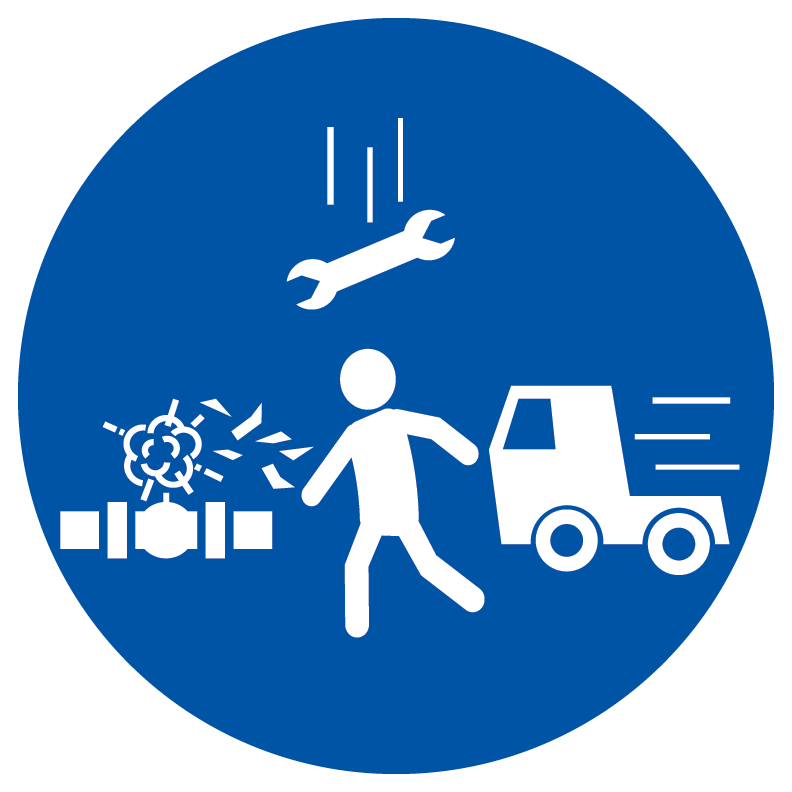Life Saving Rules are essential safety principles that when followed, will protect employees from serious injury or death. These rules were developed around hazards specific to Mauser Packaging Solutions and are focused, clear and simple, actionable, and observable.
LINE OF FIRE

Struck-By Incidents
Struck-by incidents occur when an individual is hit by a moving object. This includes:
- Being struck by a moving object
Example: an employee hit by a forklift
- Being struck by flying debris
Example: debris generated by grinding or pressure washing becoming airborne and being flung toward another employee
- Being struck by a dropped object
Example: Dropping a tool from a platform while conducting maintenance
Caught-in or Between Incidents
Caught-in/between incidents are when someone becomes caught or stuck between multiple objects or moving parts of one object. This includes:
- Being pinned between a moving object and a fixed object.
Example: employee pinned between a forklift and a wall or barrier
- Being caught in a rotating part.
Example: employee getting caught in a flywheel or sprocket and pulled into the machine/moving part
- Being caught between containers.
Example: a hand pinched between two drums on a conveyor.
Prevention
The best way to prevent Line of Fire of incidents are to eliminate the hazard (i.e. don’t use forklifts in areas with pedestrians, don’t work above people, etc.). If elimination is not possible, engineered controls (such as guarding, barriers, netting, tileboards on platforms, etc.) should be implemented. When the hazard cannot be eliminated completely. it is essential to decrease the probability of sustaining an injury by identifying existing and potential hazards and determining the controls required to safely perform the task. It is important to understand the processes around you in order to keep yourself out of the Line of Fire.
Our Commitment to Line of Fire:
I will position myself to stay out of the path of moving objects, vehicles, pressure releases, and dropped objects.
- I will never stand under suspended loads.
- I will establish and obey barriers and exclusion zones.
- I will take action to secure loose objects and report any potential for dropped objects.

